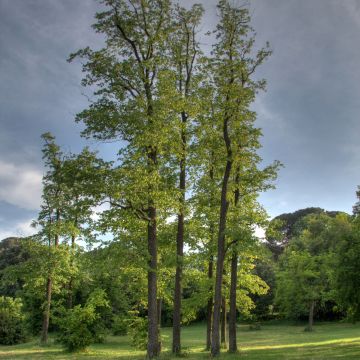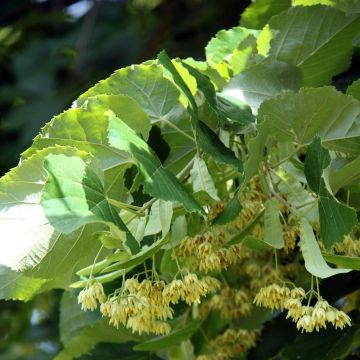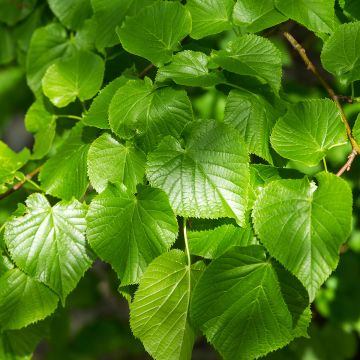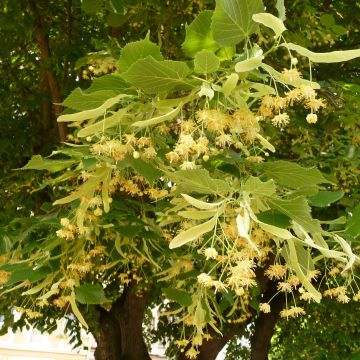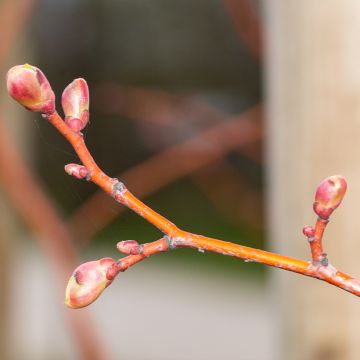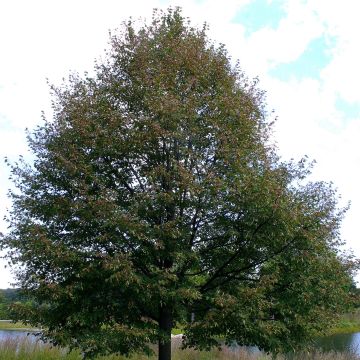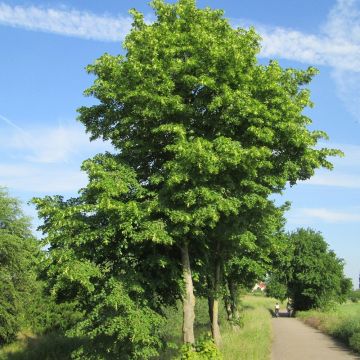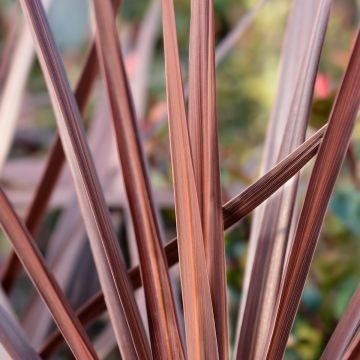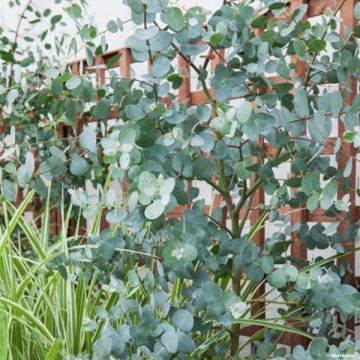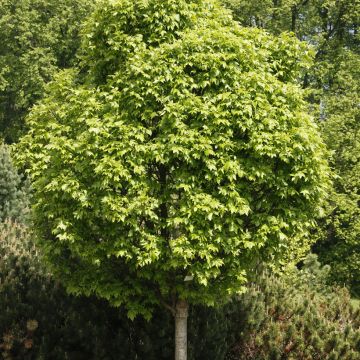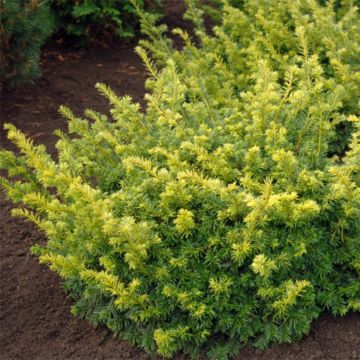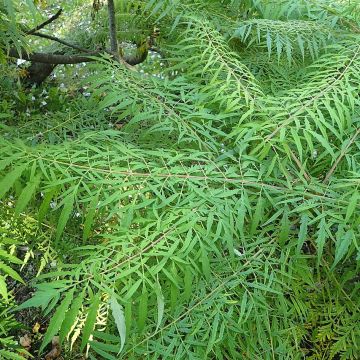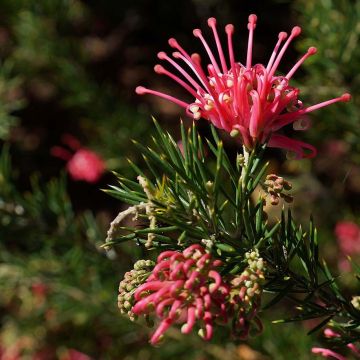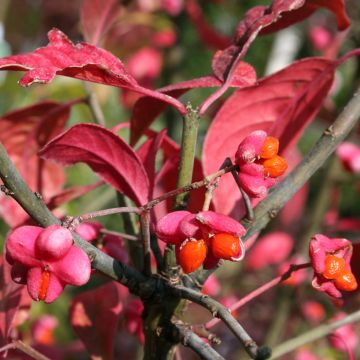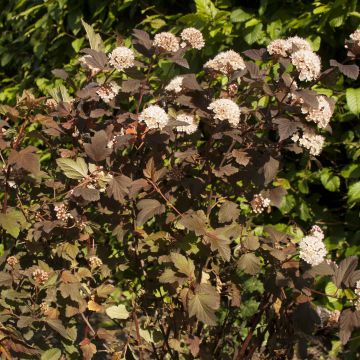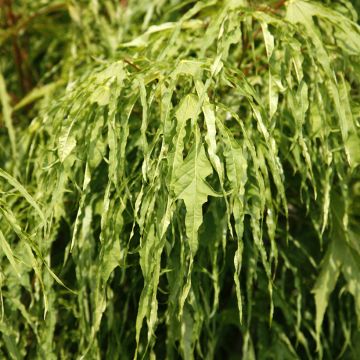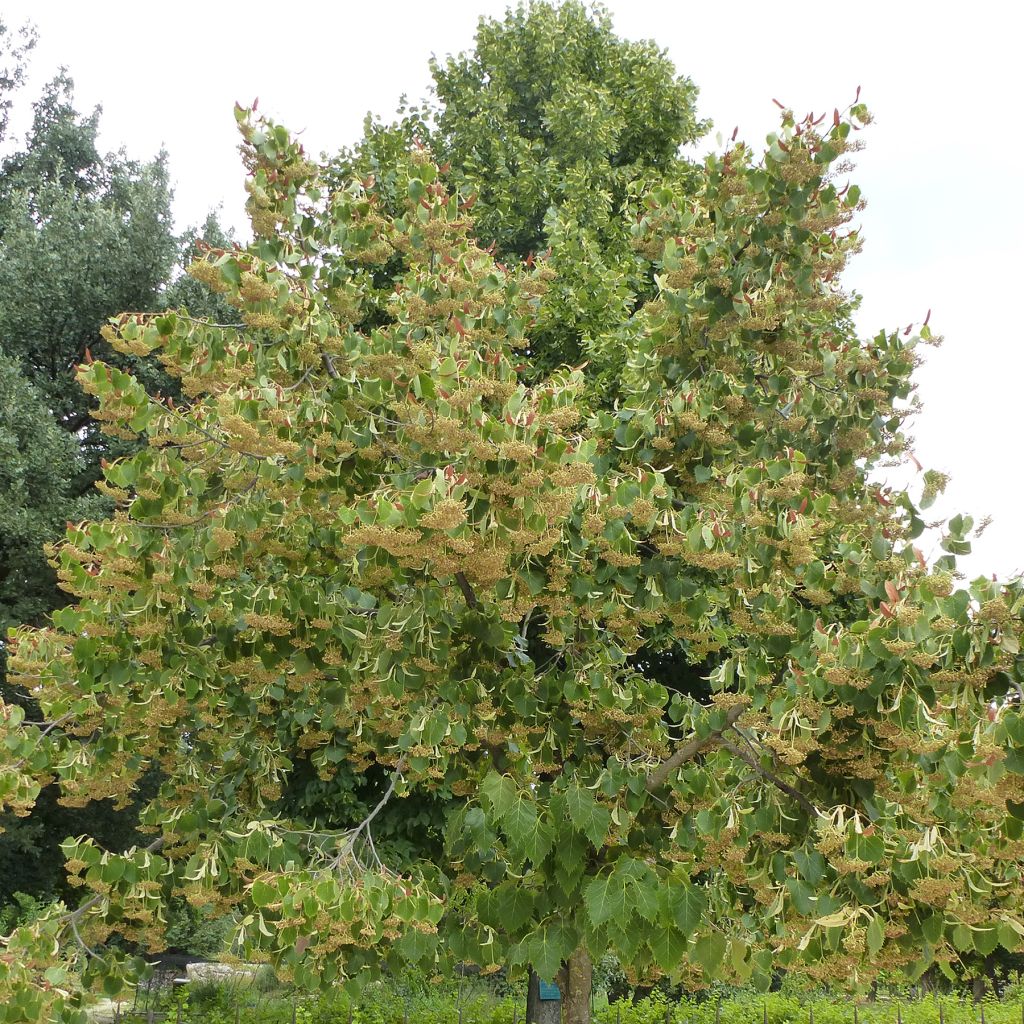

Tilia henryana - Lime
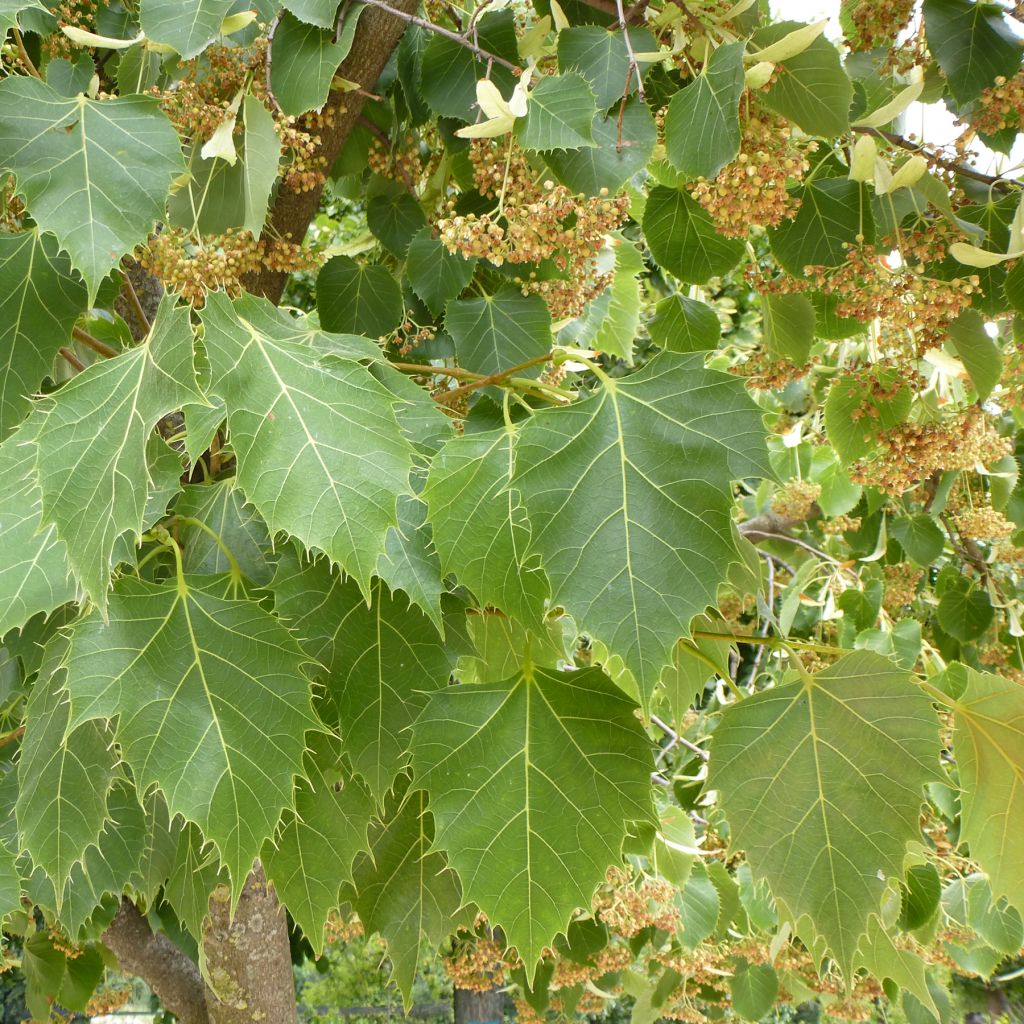

Tilia henryana - Lime
Tilia henryana - Lime
Tilia henryana
Henry's Lime
This item cannot be shipped to the selected country
Delivery charge from €5.90
More information
Schedule delivery date,
and select date in basket
This plant carries a 24 months recovery warranty
More information
We guarantee the quality of our plants for a full growing cycle, and will replace at our expense any plant that fails to recover under normal climatic and planting conditions.
From €5.90 for pickup delivery and €6.90 for home delivery
Express home delivery from €8.90.
Does this plant fit my garden?
Set up your Plantfit profile →
Description
Tilia henryana is a Chinese botanical species with modest development, much better suited to the size of our gardens than its European cousin. This small, original and elegant tree is distinguished by its late, fragrant and highly honey-bearing flowering, valuable in beekeeping. Its deciduous foliage is a changing adornment, formed by beautiful heart-shaped leaves, bordered by cilia, with a silver underside. Sporting a lovely pink-copper colour when budding, they turn a bright golden yellow at the end of the season. In winter, it reveals its smooth grey bark, which becomes fissured over time. Slow-growing, it prefers a sunny location, and cool, deep, and slightly calcareous soils.
Tilia henryana belongs to the Malvaceae family. It is native to central China. The growth of this small tree is very slow and its adult size will not exceed 12 to 15m (39 to 49ft) in height and 10m (33ft) in width.
When young, it has a rather pyramidal habit, then it widens to form a well-branched crown over an often quite short trunk: its branches show a rather ascending growth. Its entire, alternate leaves, 8 to 12cm (3 to 5in) in length, are heart-shaped at the base, and bordered by long and fine teeth. Pinkish-orange to coppery in spring, they turn a shiny green in summer on the upper side, showing a reddish-brown and silver velvety underside. In autumn, they turn to golden yellow and then dark red and remain attached to the branches for a long time. The flowering takes place in late summer, in August-September. Numerous small creamy-white flowers with lime green stamens gather in pendulous corymbs, 15 to 20 in number. They are attached by a long petiole to the branches. The remarkably fragrant flowers are popular with bees. They are followed by small globose fruits attached to a wing called samaras, which are initially green and then grey.
Tilia henryana can be planted in isolation or to shade an ericaceous bed. You can plant it with the Persian Ironwood or x Sycoparrotia, similar but with semi-evergreen foliage that turns golden yellow in autumn. Use it, for example, in an informal hedge, accompanied by Japanese maples, Caramel Tree, Hydrangea Hot Chocolate, and the Winged Spindle Tree (Euonymus alatus) to create a vibrant and fragrant grove from September to November. Its flowers are an important source of nectar, valuable for those who raise bees. A Japanese Medlar, flowering in October-November with a scent of bitter almond, can also play this nourishing role in a scented garden.
Report an error about the product description
Tilia henryana - Lime in pictures
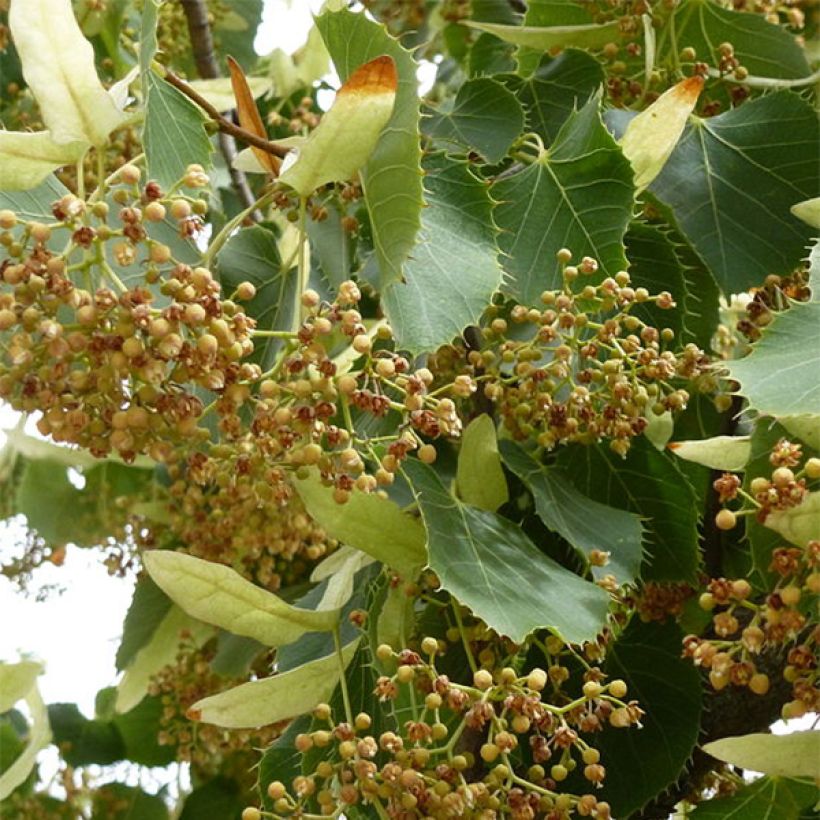

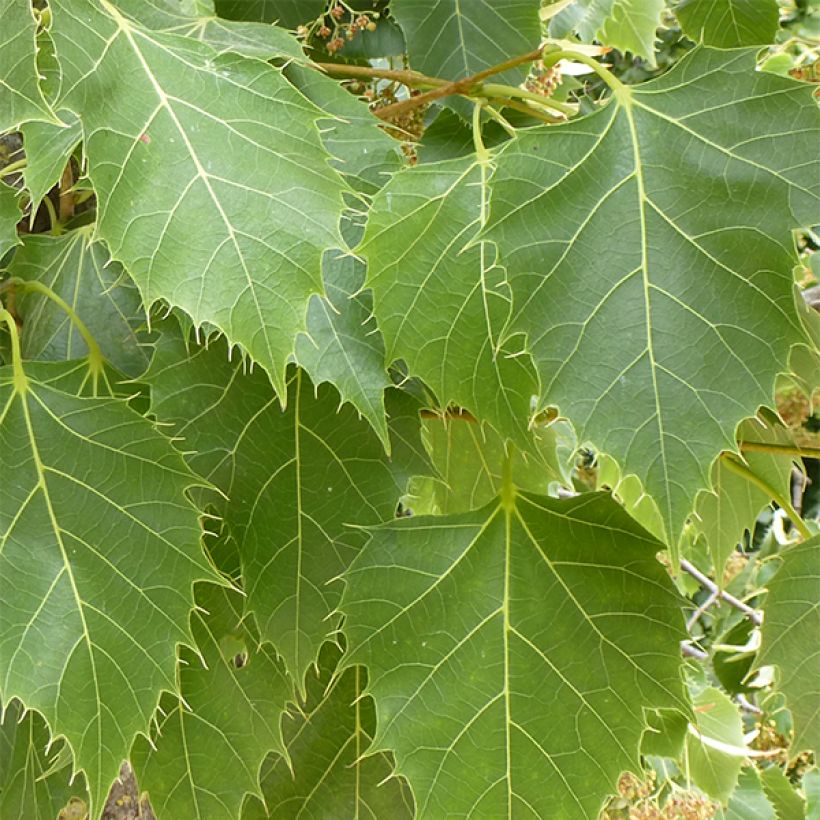

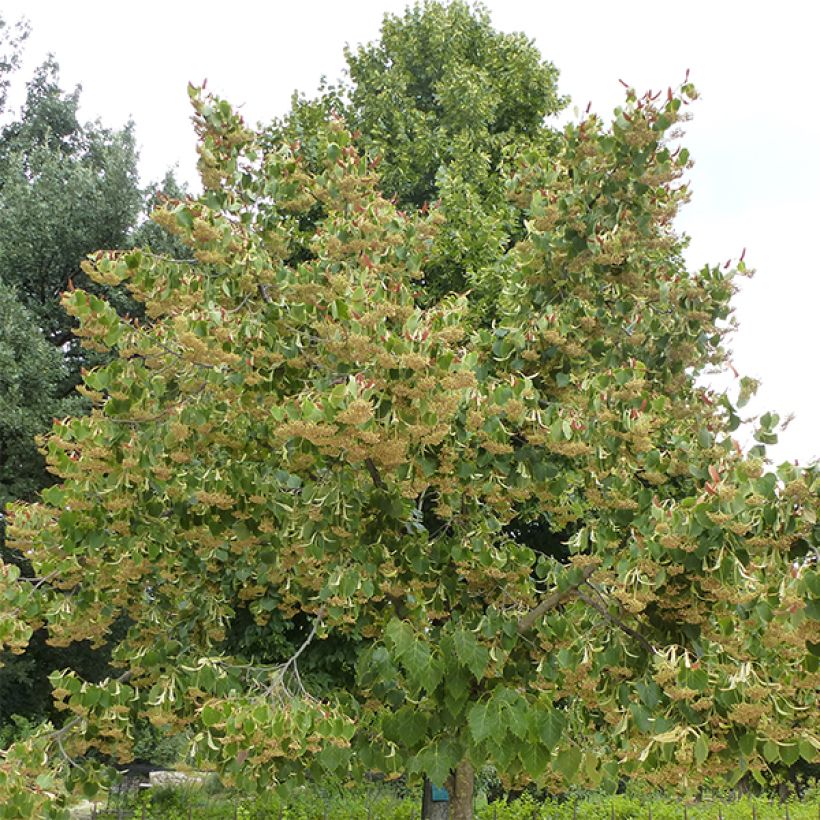

Plant habit
Flowering
Foliage
Botanical data
Tilia
henryana
Tiliaceae
Henry's Lime
China
Other Tilia - Linden
Planting and care
Plant in autumn or spring. It tolerates cold weather, but prefers warm and sheltered locations. It can withstand wind and sea spray quite well. It requires a sunny exposure or, at most, partial shade. It is sensitive to chalky and dry soils, but tolerates acidic soils well, although not overly poor. It should not be planted in excessively wet or dry soils. Deep, fertile, and moist but well-drained soil will ensure optimal growth. In the early years, practice training pruning by removing low branches for easier access under the tree.
Planting period
Intended location
Care
-
, onOrder confirmed
Reply from on Promesse de fleurs
Striking foliage shrubs
Haven't found what you were looking for?
Hardiness is the lowest winter temperature a plant can endure without suffering serious damage or even dying. However, hardiness is affected by location (a sheltered area, such as a patio), protection (winter cover) and soil type (hardiness is improved by well-drained soil).

Photo Sharing Terms & Conditions
In order to encourage gardeners to interact and share their experiences, Promesse de fleurs offers various media enabling content to be uploaded onto its Site - in particular via the ‘Photo sharing’ module.
The User agrees to refrain from:
- Posting any content that is illegal, prejudicial, insulting, racist, inciteful to hatred, revisionist, contrary to public decency, that infringes on privacy or on the privacy rights of third parties, in particular the publicity rights of persons and goods, intellectual property rights, or the right to privacy.
- Submitting content on behalf of a third party;
- Impersonate the identity of a third party and/or publish any personal information about a third party;
In general, the User undertakes to refrain from any unethical behaviour.
All Content (in particular text, comments, files, images, photos, videos, creative works, etc.), which may be subject to property or intellectual property rights, image or other private rights, shall remain the property of the User, subject to the limited rights granted by the terms of the licence granted by Promesse de fleurs as stated below. Users are at liberty to publish or not to publish such Content on the Site, notably via the ‘Photo Sharing’ facility, and accept that this Content shall be made public and freely accessible, notably on the Internet.
Users further acknowledge, undertake to have ,and guarantee that they hold all necessary rights and permissions to publish such material on the Site, in particular with regard to the legislation in force pertaining to any privacy, property, intellectual property, image, or contractual rights, or rights of any other nature. By publishing such Content on the Site, Users acknowledge accepting full liability as publishers of the Content within the meaning of the law, and grant Promesse de fleurs, free of charge, an inclusive, worldwide licence for the said Content for the entire duration of its publication, including all reproduction, representation, up/downloading, displaying, performing, transmission, and storage rights.
Users also grant permission for their name to be linked to the Content and accept that this link may not always be made available.
By engaging in posting material, Users consent to their Content becoming automatically accessible on the Internet, in particular on other sites and/or blogs and/or web pages of the Promesse de fleurs site, including in particular social pages and the Promesse de fleurs catalogue.
Users may secure the removal of entrusted content free of charge by issuing a simple request via our contact form.
The flowering period indicated on our website applies to countries and regions located in USDA zone 8 (France, the United Kingdom, Ireland, the Netherlands, etc.)
It will vary according to where you live:
- In zones 9 to 10 (Italy, Spain, Greece, etc.), flowering will occur about 2 to 4 weeks earlier.
- In zones 6 to 7 (Germany, Poland, Slovenia, and lower mountainous regions), flowering will be delayed by 2 to 3 weeks.
- In zone 5 (Central Europe, Scandinavia), blooming will be delayed by 3 to 5 weeks.
In temperate climates, pruning of spring-flowering shrubs (forsythia, spireas, etc.) should be done just after flowering.
Pruning of summer-flowering shrubs (Indian Lilac, Perovskia, etc.) can be done in winter or spring.
In cold regions as well as with frost-sensitive plants, avoid pruning too early when severe frosts may still occur.
The planting period indicated on our website applies to countries and regions located in USDA zone 8 (France, United Kingdom, Ireland, Netherlands).
It will vary according to where you live:
- In Mediterranean zones (Marseille, Madrid, Milan, etc.), autumn and winter are the best planting periods.
- In continental zones (Strasbourg, Munich, Vienna, etc.), delay planting by 2 to 3 weeks in spring and bring it forward by 2 to 4 weeks in autumn.
- In mountainous regions (the Alps, Pyrenees, Carpathians, etc.), it is best to plant in late spring (May-June) or late summer (August-September).
The harvesting period indicated on our website applies to countries and regions in USDA zone 8 (France, England, Ireland, the Netherlands).
In colder areas (Scandinavia, Poland, Austria...) fruit and vegetable harvests are likely to be delayed by 3-4 weeks.
In warmer areas (Italy, Spain, Greece, etc.), harvesting will probably take place earlier, depending on weather conditions.
The sowing periods indicated on our website apply to countries and regions within USDA Zone 8 (France, UK, Ireland, Netherlands).
In colder areas (Scandinavia, Poland, Austria...), delay any outdoor sowing by 3-4 weeks, or sow under glass.
In warmer climes (Italy, Spain, Greece, etc.), bring outdoor sowing forward by a few weeks.

































